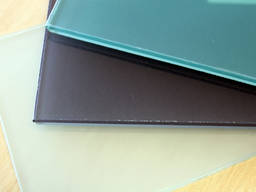Widely-used terminology in window industry
Understanding what each of these terms mean can help when it comes to understanding the industry jargon associated with insulation, energy issues and climatic zones.
This quick guide to some commonly used terms - and what they actually mean:

U-value
U-value is an international rating system used by the glass and glazing industry. U-value measures the rate of heat transfer through glass (glazing). This means that products with a lower U-value will have better insulation properties and therefore be more energy efficient. U-values depend on climatic conditions.
R-value
R-value measures a building product’s resistance to heat flow - i.e. how well it insulates but is more often used in the construction and building industry to measure insulation of walls and ceilings. The higher the R-value, the better the insulation and the greater the improvement to your home or building's energy efficiency. This correlates with greater energy savings.
Knowing what R-value and U-values mean is important when considering insulating your home for energy efficiency. These values also assist when selecting products that best suit your home or building’s climate zone.
SHGC
SHGC stands for Solar Heat Gain Co-efficient. SHGC refers to the total amount of solar energy that enters a building through glass/glazing. In other words, how well the windows block out the heat caused by sunlight. SHGC measures both direct solar radiation as well as that which is absorbed and released inward. SHGC is calculated as a number between 0 and 1. The lower the SHGC of the windows, the less heat gains into the home.
SHGC can have an effect on the amount of visible light that is transmitted: the lower the SHGC, the lower the level of visible light which can affect the brightness of a room’s interior.
UV Transmission
UV transmission refers to the amount of ultra violet light from the sun that is transmitted through glass windows. Besides its harmful effect on human skin, ultra violet light can also damage furniture, carpets and other household items. UV transmission is most often measured in the 300 – 400nm wavelength range.
VLR
VLR stands for Visible Light External Reflectance. This refers to the percentage of visible light that is reflected externally by a glass as detected by the human eye. This is a useful measure for glass where restrictions exist on the level of reflection allowed. The higher the percentage number the greater the mirror-like appearance.
VLRi
VLRi stands for Visible Light Internal Reflectance and refers to the percentage of visible light that is reflected internally by a glass as detected by the human eye. This is a useful measure when determining the level of internal reflectance at night time. All glass products (apart from specialty anti-reflecting products) have internal reflectances which make it difficult to see clearly out of a window at night time with lights on inside. Internal reflectances increase with the use of reflective coated glass products.
RW Rating
RW stands for the Weighted Sound Reduction Index and measures the reduction of sound decibels transferred through a single building element. The higher the RW rating, the better the sound insulation.
STC
STC stands for Sound Transmission Class. The STC reflects the amount of noise that is reduced when sound passes through a window.


